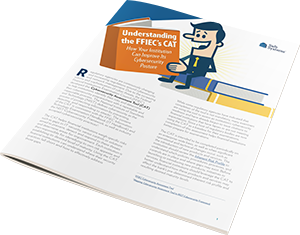Disaster Recovery Planning: How to Prepare Your Bank for Fall Storm Season

The potential damage that storms can inflict underscores the importance of Business Continuity Planning and disaster preparation, especially for local community banks and credit unions. A single disaster event, be it a hurricane, tornado, earthquake, severe thunderstorm, etc., has the potential to devastate communities by disrupting thousands of businesses and organizations and impacting millions of lives. While disasters do not take any seasons off, historically some of the worst storms actually hit during the fall months. A lack of proper planning and preparation could be particularly devastating for a financial institution impacted by a fall storm, as their customers will expect prompt access to their money in the aftermath of such an event. Moreover, regulators have expectations of their own, and financial institutions could face poor examination scores, fines, or increases in FDIC insurance costs. But who has the time to undertake such a big project? BCP/DR planning is especially challenging for smaller community financial institutions who often lack the staff and resources of larger institutions.
It is imperative that financial institutions have a solid Business Continuity Plan (BCP) and Disaster Recovery (DR) procedures in place and are able to implement them, as required by Federal Financial Institutions Examination Council (FFIEC) guidelines. These plans are instrumental to make sure that people, process, and technology elements are all properly coordinated to efficiently recover from disasters or business interruptions. In a disaster situation there is a stark difference in the reaction from financial organizations who have a disaster plan in place and those that do not. A solid and actionable BCP can literally be the difference between a temporary outage, and an institution closing its doors forever.
Preparing for Fall Storms
 Aside from having a BCP and associated DR plan in place and the skills necessary to execute those plans, there are several additional steps your financial institution can take to adequately prepare for storms, natural disasters, and any other business outages, including:
Aside from having a BCP and associated DR plan in place and the skills necessary to execute those plans, there are several additional steps your financial institution can take to adequately prepare for storms, natural disasters, and any other business outages, including:
- Evaluating all backups and ensuring any redundant equipment critical to recovery is up-to-date and working;
- Utilizing Uninterruptable Power Supplies (UPS) for short-term outages in power or preemptively shutting down servers and all IT equipment in anticipation of an extended outage;
- Ensuring that the server room is locked with separate key access and that all equipment and sensitive documentation is otherwise secure if facilities must be vacated for an extended period;
- Validating the procedures outlined in BCP/DR plans through functional testing; and
- Ensuring that employees, vendors, and customers are aware of the proper communication protocols and contacts through educational efforts.
Common Issues and Solutions
Banks and credit unions that try to manage their own technology solutions, including backups, email, and server management, often get mired in day-to-day operational concerns. This leaves precious little time for the institution to make plans for potential disasters. The result is often a plan that does not truly consider all the processes and functions that go into running the business. This can leave significant gaps in recovery capabilities that might remain hidden to internal stakeholders without proper testing.
These issues can be avoided by working with an IT service provider who understands the unique needs each financial institution has when preparing for and recovering from a natural disaster. To ensure your institution is prepared for storm season and doesn’t run into the common issues mentioned above, partner with an IT service provider that offers the following:
- Recovery plan testing on an annual basis;
- Remote and secure back-ups;
- Compliant data recovery practices;
- Readily available staff and engineers; and
- Proactive communication.
Fall storms and natural disasters cannot be prevented, but proactively knowing where to go, who to contact, and what critical functions to restore first can provide confidence when responding to a disaster. Developing, implementing, and regularly testing disaster recovery procedures as part of your business continuity plan is crucial in today’s banking environment. At Safe Systems we have been working with banks and credit unions for more than 20 years. Our proven experience enables us to provide the services and assistance necessary to help our customers weather the storm with minimal business interruption.



